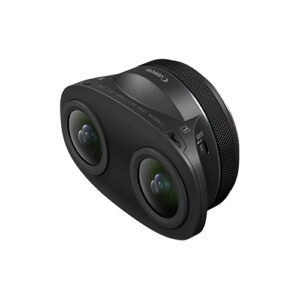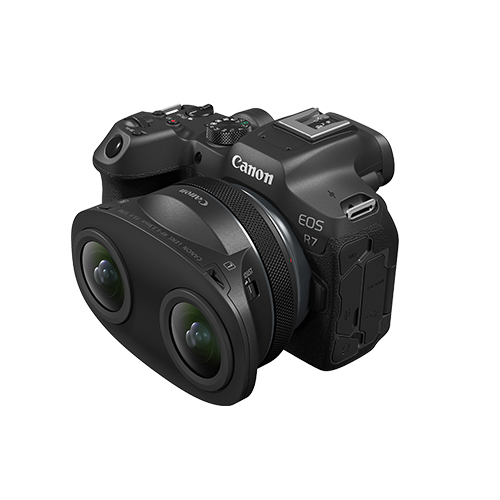ultra wide angle
Showing the single result
-
Canon RF-S3.9mm f/3.5 STM Dual Fisheye
₹0.00Quick ViewVirtual Reality Storytelling
The lightweight RF-S3.9mm f/3.5 STM Dual Fisheye lens with Autofocus can capture 144-degree 3D stereoscopic visuals by utilising the parallax of the left and right fisheye lenses. This design allows a single sensor to receive light from both lenses, making it easier to record Virtual Reality content with just one camera.
- Dual-Lens STM Autofocus
- Streamlined Virtual Reality Production Workflow
- Large Aperture of f/3.5
Stepping Motor (STM)
The RF-S3.9mm f/3.5 STM Dual Fisheye has a gear-type stepping motor (STM) that utilises a dual-lens autofocus (AF) mechanism. This mechanism synchronously controls the movement of the left and right lenses.
AF becomes just as user-friendly as using a regular RF lens. An advanced microprocessor optimises the actuator control to align with the camera’s AF algorithm, resulting in fast and accurate autofocus.
Dual-Lens Electro Magnetic Diaphragm (EMD)
Both left and right lenses of the RF-S3.9mm f/3.5 STM Dual Fisheye feature EMD that controls exposure electronically.
The large aperture of the RF-S3.9mm f/3.5 STM Dual Fisheye performs well in low-light situations.
Two Types of Filters
The RF-S3.9mm f/3.5 STM Dual Fisheye has a rear filter holder that can hold either a gelatin filter or a screw-on (30.5mm) type filter.
Using a Neutral Density (ND) filter, you can shoot with a wider aperture even when shooting outdoors during the day.
ASC
Air Sphere Coating (ASC) is a coating technology that provides even more excellent anti-reflection properties than conventional vapour-deposition coatings.
Even with large-aperture lenses, ASC is used on curved glass surfaces to reduce lens flare and ghosting.
Adjustable Focus Differential
The RF-S3.9mm f/3.5 STM Dual Fisheye has an actuator that can independently drive only the right lens.
This enables the relative focus of the left and right lenses to be adjusted using the left-right focus difference adjustment mode switch and the focusing/control ring.
How Virtual Reality Imaging Works
Two Fisheye Lenses
Recording is done with parallax using two fisheye lenses on one sensor.
Conversion
The software converts recordings into equirectangular projections, a standard Virtual Reality format.
Projected to HMD
Cropped and converted recordings are projected into a head-mounted display (HMD) to simulate a human’s vision.
3D Realism
Due to the parallax effect, the recordings will appear 3-dimensional (3D) when viewed individually by the left and right eye.
Mechanism of Virtual Reality Recording
Single-Sensor Recording
With the RF-S3.9mm f/3.5 STM Dual Fisheye attached to the EOS R7 mirrorless camera, users can take advantage of the camera’s recording capabilities to create 4K 144-degrees VR footage by using just one camera on one sensor.
Two Cameras No Longer Required
Conventional VR recording requires aligning two cameras and syncing camera positions, with additional processes like colour matching and stitching required after shooting. The RF-S3.9mm f/3.5 STM Dual Fisheye and EOS R7 have a single-sensor recording capability, eliminating such hassles.
A More Efficient Workflow
The RF-S3.9mm f/3.5 STM Dual Fisheye enables recording on a single camera with one CMOS image sensor, thereby eliminating certain stages from the workflow that were previously necessary with a two-camera system, such as aligning the positions and synchronising the settings of the left and right cameras before the shoot, or the need to stitch images in post-production.


